6 Symptoms of a Bad Clutch (and Replacement Cost)
If you drive a manual vehicle long enough, it’s only a matter of time until you start to wear out the clutch. While there are some things you can do to prolong the life of a clutch, they all wear down eventually, and if you don’t recognize the symptoms early enough, it can lead to even more expensive repairs.
But what exactly does a clutch do, how long should they last, and how do you know they’re starting to fail? And did you know that manual vehicles aren’t the only ones with a clutch?

Signs Your Clutch Is Failing
Now that you know a little more about the components that make up your vehicle’s clutch, you can start to diagnose when things aren’t working the way they should.
We’ve highlighted six common problems clutches experience. If your clutch is experiencing any of these symptoms, you’ll need to inspect the system further and potentially replace or repair the clutch.
#1 – Grinding Gears

When a clutch starts to fail, it usually won’t go from working fine to breaking completely overnight. And one of the most common signs of a failing clutch is grinding gears.
You know how far you need to depress the clutch to disengage it and reengage it again, and if you’re doing everything right and gears are still grinding, it’s worn down a bit, and it’s time to replace it.
#2 – Loose Clutch Pedal

As your clutch starts to wear down, you need to depress it further and further to disengage the clutch. Other types of a loose clutch pedal include one that’s not actively depressing the clutch when you move it or a soft or spongy clutch that signifies a problem with the hydraulic system.
Either way, it’s a problem you’ll need to diagnose and address as soon as possible.
See Also: How to Adjust a Clutch Pedal
#3 – Sticky Clutch Pedal
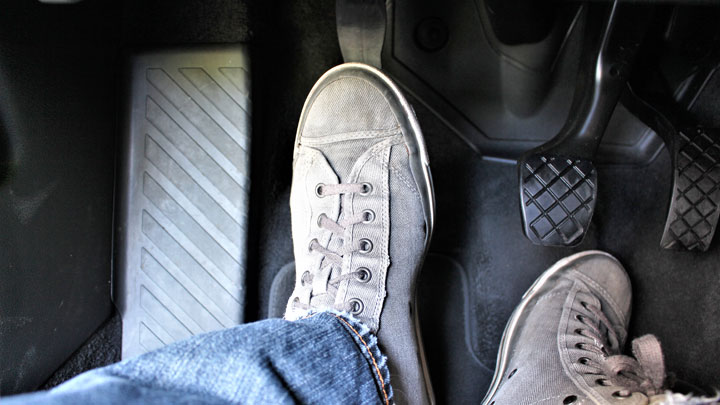
Just like a clutch can be too loose as it starts to wear down, various problems can lead to a clutch that’s too challenging to depress. This is just as serious of a problem as it can keep you from safely shifting gears when you need to, and it’s putting too much pressure on the entire system.
Common causes of a stiff clutch plate include problems with the hydraulic system or the clutch pressure plate.
#4 – Difficulty Shifting Gears
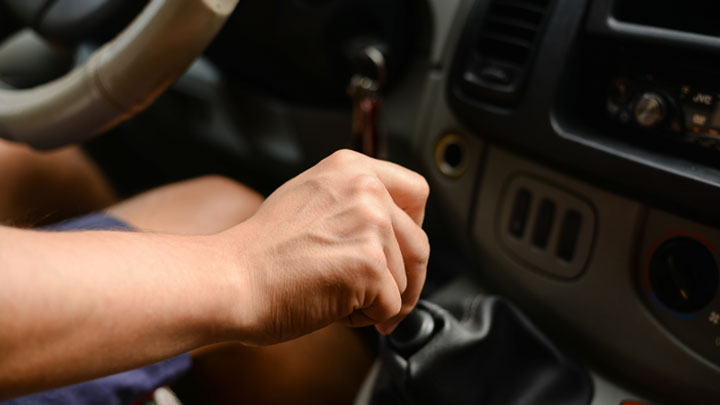
Considering it’s the clutch’s job to help you shift gears, it’s no surprise that if one starts to fail, you might start having problems shifting gears. You might need to depress the clutch pedal further than normal, and in more severe situations, you might not be able to shift gears at all.
#5 – Burning Smells
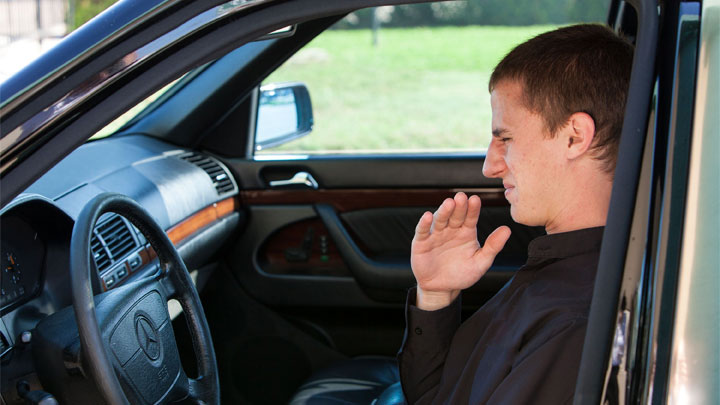
When your clutch isn’t fully disengaging, or it’s rubbing against the flywheel the wrong way, it will create a ton of friction. This friction comes off as heat, and as things start to get too hot, they’ll start to burn.
However, a burning smell could come from a lot of different areas, so you’ll need to thoroughly troubleshoot before jumping right to the clutch.
#6 – Fluid Leak
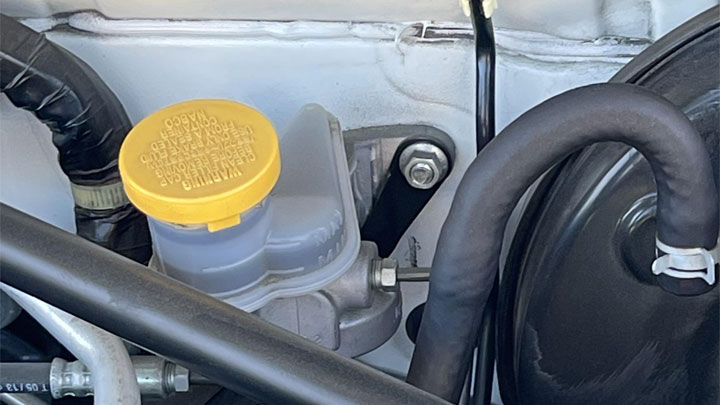
Since modern clutch systems use hydraulics to help you disengage the clutch, it’s no surprise that a hydraulic fluid leak from the clutch master cylinder, slave cylinder, or one of the hydraulic lines could be a sign of a deeper problem.
How Long Does a Clutch Last?
If you take care of a modern clutch and shift it correctly, it should last anywhere between 75,000 and 150,000 miles. Your driving habits play a huge role in how long a clutch will last; riding the clutch excessively or grinding gears consistently will wear out the clutch faster.
Because of this, clutches can wear out before 75,000 miles, but this almost always happens because of more aggressive or poor driving habits.
A good example is someone with a high powered all-wheel drive car, such as a Subaru WRX STI. As tempting as it may be to drive up the RPMs with the clutch pedal depressed and then “launch” the car, you will be greatly shortening the life of your clutch by doing so.
What a Bad Clutch Looks Like

If you’re hoping you can tell if a clutch is bad just by looking at it, you might be out of luck. While some clutches will have obvious damage, scratches, dents, or warpage, sometimes they look perfectly fine, but they’re just worn a little too thin, or a bearing isn’t working the way it should.
Because of this, it’s important to diagnose a faulty clutch before you pull it all apart and then to replace the right components.
When replacing a clutch, we recommend completing a fluid flush, the pilot bearing, the throw-out bearing, the clutch disc, and the pressure plate. You also might need to resurface the flywheel.
It’s a lot of work, but it will save you from tearing everything back apart a few thousand miles down the road!
Clutch Replacement Cost
Best places to order parts? See: 19 Best Online Auto Parts Stores
If your vehicle needs a new clutch, it’s not a low-cost job. While it won’t cost as much as a new transmission, you should still expect to spend between $1,250 and $1,500 for a new one.
It’s also not the easiest job for a DIYer to complete, so if you don’t have any automotive experience, it might be best if you leave this job to the professionals. However, if you do the job yourself, you can see significant savings, as typically the necessary parts cost between $600 and $750.
FAQs
Do Clutches Fail Suddenly?
While it’s technically possible for a clutch to fail suddenly, it’s incredibly rare. Typically clutches will fail slowly over time, and it’s only if you continuously ignore the symptoms of a worsening clutch that they’ll fail completely.
However, while it’s unlikely, it is possible that the clutch fails all at once. Common reasons for this include a broken clutch cable or a blown-out hydraulic hose.
What Can Happen if You Keep Driving With a Worn Clutch?
While a clutch isn’t likely to break completely and all at once, that doesn’t mean it’s a problem you should ignore. Not only will the problem continue to get worse, but it’s also possible that you can damage more components by driving with a worn clutch.
This can happen when the gears grind excessively, leading to transmission damage, or the clutch plate can wear out the flywheel. Not only that, but a worn-out clutch makes it harder to shift, which can lead to an accident on the road.
What Is the Purpose of a Clutch?
Your vehicle’s transmission uses multiple gears to deliver different power amounts to the wheels as you drive to match various driving conditions. It’s a necessary part of any vehicle with an internal combustion engine, but without a clutch, switching to those gears can be quite problematic.
That’s because the engine never stops spinning and delivering power, so when you try to shift to a new gear, the transmission will grind and potentially break gears. The clutch allows the transmission to stop spinning, making it possible to switch to a different gear ratio before redelivering power.
It’s a necessary part of every vehicle; otherwise, you would only be able to operate your vehicle in one gear!
Related: 6 Signs of a Slipping Clutch
Do All Cars Have a Clutch?
When you think about a clutch on a vehicle, your mind likely jumps straight to a vehicle with a manual transmission. But while these are the only vehicles with a clutch you can manually depress, vehicles with an automatic transmission need a clutch too.
These vehicles use clutch packs, and while they serve the same purpose as a clutch pack, they work in a slightly different way. For this guide, we focused on clutches on a manual transmission since they’re more likely to wear out and much easier to fix without replacing or rebuilding the entire transmission.
Parts of a Clutch
When you’re looking at a manual clutch, there are a few different components to consider, and while many people break them down into primary and secondary clutch components, we will highlight them all for you here since they all work together to help your vehicle shift gears.
Clutch Disc

You can’t talk about a vehicle’s clutch without talking about the clutch disc! The clutch disc sits on the input shaft between the flywheel and the pressure plate, and it’s the component that actually moves when you depress the clutch.
When you depress the clutch, it disengages the clutch, allowing you to safely shift gears without grinding moving gears against each other!
Pressure Plate
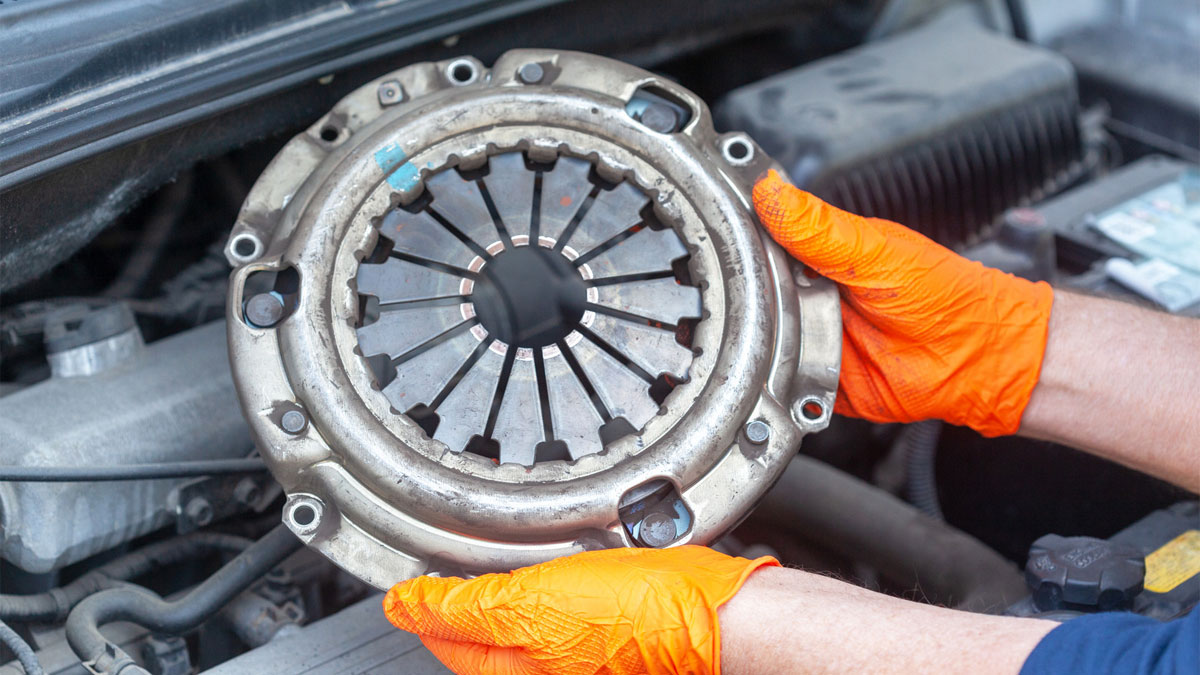
While the clutch plate lets you disengage the clutch when you depress the pedal, it’s the pressure plate that engages everything when you let it go.
The pressure plate pushes the clutch disc against the flywheel when you’re not depressing the clutch, which transmits engine power to the transmission!
Thrust Bearing

The thrust bearing, also known as the throw-out bearing, is the component the clutch fork pushes against to disengage the pressure plate.
Thrust bearings come in various shapes and sizes to match the engine and transmission, but they all serve the same function, they activate the disengagement of the pressure plate.
Clutch Fork

The clutch fork is a manual component that actively moves when you depress the clutch, pushing in the throw-out bearing to disengage the pressure plate.
The clutch fork is a relatively simple component, but it needs to be just the right size and move the right amount to successfully disengage the clutch each time.
Clutch Master & Slave Cylinders
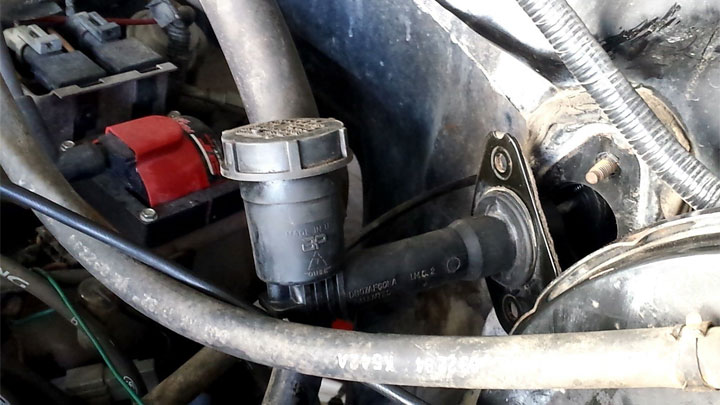
When you depress the clutch on a modern vehicle, it uses hydraulics to convert that movement into power to disengage the system.
Those hydraulics run through a clutch master cylinder and a slave cylinder to convert that pressure into the right amount of power to disengage the clutch.
Flywheel
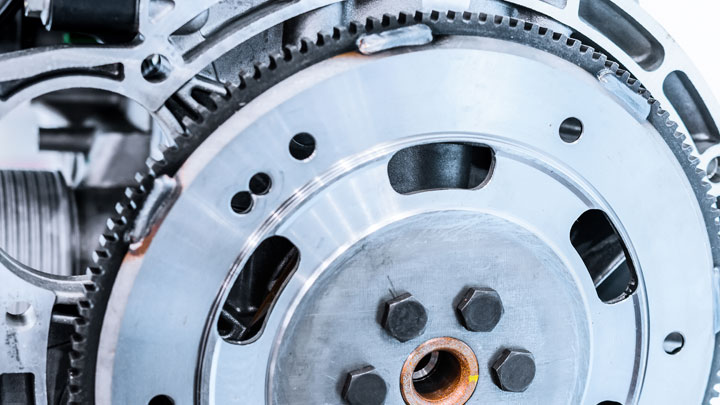
While some people might not view the flywheel as a component of the clutch system, it’s an integral part. The pressure plate mounts directly to the flywheel to generate the necessary power for the transmission, and the clutch plate needs to disengage from the flywheel for you to be able to shift gears.
So, if there’s a problem with the flywheel, there’s a good chance the clutch won’t work the way it should.
- P0521 Code (Symptoms, Causes, How to Fix) - Mar 22, 2024
- How to PROPERLY Clean 5 Types of Steering Wheel Materials - Feb 19, 2024
- What Should You Do If Your Check Engine Light Comes On? - Nov 6, 2023
